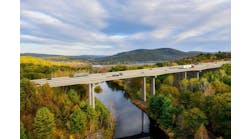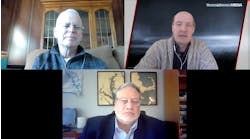Each year, millions of dollars are spent in North America removing and replacing, rehabilitating or financially compensating owners for concrete that is unacceptable. In many cases, the cause of dissatisfaction was surface scaling or spalling. Concrete scaling is defined by the American Concrete Institute (ACI) as "local flaking or peeling away of the near-surface portion of hardened concrete or mortar," which defines various degrees. These are light, medium, severe and very severe depending on the depth of the scaling. Concrete contractors, suppliers, homeowners and transportation officials are very familiar with this kind of surface deterioration.
Trying to stop infections
In many cases, the use of deicing chemicals is cited as the primary cause of concrete scaling. In the U.S. there are approximately 30 states that expend a large percentage of their transportation budget on winter maintenance. Providing safe roadways for the traveling public and helping ensure steady commerce through the winter season are the primary justifications for this effort. Traditionally, this service has been accomplished by mechanically removing accumulated snow and ice from roadways and re-establishing traction through the use of abrasives and solid chemicals.
Winter road maintenance has undergone major changes in the course of the last decade. There has been a shift away from the use of solid chemicals and sand-salt combinations that are costly to purchase, store, use and clean up, and toward the use of liquid deicing chemicals.
The use of liquid chloride deicers has enabled many transportation departments to take a proactive approach to winter road maintenance through anti-icing (treating roadways before a winter storm) and improved, more efficient deicing procedures. This new strategy has resulted in questions by the concrete industry as to the effects of these materials on concrete integrity.
Water-based solutions containing combinations of magnesium chloride, calcium or sodium chlorides also are being used, the latter two as concentrated deicing brines. The volume of these materials being applied is expanding rapidly.
It has been demonstrated that deicing chemicals can cause and aggravate surface scaling, particularly in concrete with poor air void systems and low air contents. The presence of chlorides in the surface matrix of exposed concrete can cause a buildup of osmotic and hydraulic pressures produced when water in the concrete freezes. If this pressure exceeds the tensile strength of the concrete surface, scaling may result. Additionally, the hygroscopic (moisture absorbing) nature of salts keeps the concrete saturated, increasing the potential for freeze-thaw damage to the concrete.
Not all field concrete exposed to chloridebased deicers (including magnesium chloride) has shown premature scaling or spalling. What, then, is the mechanism behind failure? This question is being addressed by many entities including a pooled fund study led by the South Dakota Department of Transportation with cooperation from the Federal Highway Administration.
Experience has shown that maximum resistance to scaling can only be expected and achieved with a combination of multiple procedures executed correctly. These include (a) proper selection and proportioning of the concrete mixture; (b) use of high-quality materials; (c) achievement of an adequate, in-place air void system; (d) proper finishing procedures that do not impair the near-surface air void system; (e) application of proper curing practices designed for existing field conditions; and (f) drying and sealing of the concrete before the first freeze-thaw cycle and deicer application.


